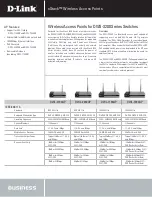
Installation Instructions
Model Number 1060-00
Assembly Components:
(877) 867-2312
www.oberonwireless.com
P/N 1412 – Rev. 11/01/06
Oberon, Inc.
1315 South Allen Street
State College, PA 16801
Copyright 2006
- Ceiling AP mount Model 1060-00 assembly – 1 each
- #6 – 32 eyebolt – 2 each
- Keys for access door lock – 2 each
- Fire Resistant Foam – 1 each
- 3/4” Trade Size Cable Clamp – 1 each
- Support wire – 4 each
- Fire Block Foam – 1 each
If any of these items are missing, contact your Oberon representative.
Find a flat work surface to
assemble the
ceiling AP mount
and
access point
prior to mounting
in ceiling.
Step 1 – Turn AP mount upside
down so that the access point
opening is facing toward the table
and the connector clamp is facing
upward.
Step 2 – Install the eyebolts in the
threaded holes located along the
centerline of the AP mount edge
as illustrated in
Figure 1
.
The eyebolts are will be used to
attach the AP mount to a
permanent structure within the
ceiling using grid wire.
Step 3 – Turn the AP mount over
so that the access point opening
is facing upward. Install the
mounting plate using four (4) #6-
32 flat head screws (included with
the Cisco 1130AG Access point).
The raised lock tab should be
facing the key lock on the AP
mount as in as shown in
Figure 2
.
Install the screws in the Cisco
mounting plate using the holes
designated as “A”
NOTE: At this point, you may
install the access point (steps 4 –
6) into the AP mount, or you may
proceed directly to steps 7 – 11 to
install the AP mount in the ceiling,
and then return to steps 4 – 6 to
install the access point.
Page 2
Step 4 – Insert the key into the lock and turn
the lock 180° in both directions to determine
which way the slide needs to be moved so
that the mounting plate is moved to the
position where it is located closest to the key
lock.
NOTE: The Cisco 1130 AP is locked into the
AP mount using the key. The turning of the
key activates a cam mechanism that slides
the mounting plate underneath the access
point, thus, locking the tabs of the mounting
plate into the key hole shaped slots on the
bottom of the access point. Once the access
point is installed and the key removed, the
access point is securely mounted in the AP
mount and cannot be removed without the
key. Additional security measures as
described in Cisco’s
Installation Guide
(i.e.
padlocks.
Figure 3 -
Verify proper key/mounting plate orientation
security screws, and security hasp) are not
required.
Step 5 – Open the access door on the top of
the Cisco 1130 access point. Place the
access point in the opening of the AP mount
(reference Figure 4) with the opening in the
access door closest to the key lock. If the
key is turned the proper direction, the
access point should drop in and self-center
itself so that the tab on the mounting plate
falls into the key slots on the bottom of the
mounting plate (reference Figure 5).
NOTE: If the tab and key slot do not
align properly, turn the key 180° and repeat
step 5.
Step 6 – After verifying that the access point
is properly seated within the opening, turn
the key 180° to lock the Access Point in
place. The key should require minimal effort
to turn. If excessive force is required to turn
the key, verify that the access point is
properly seated within the opening and then
re-try turning the key.
The assembled unit is now ready for ceiling
installation.
Page 3
Figure 1 -
Installation of eyebolts.
Figure 4 -
AP Installation
Figure 2 –
Installation of the Cisco Mounting Plate
Figure 5 -
Close-up showing proper seating of tab within key slot (Cisco
mounting plate shown in gray)




















